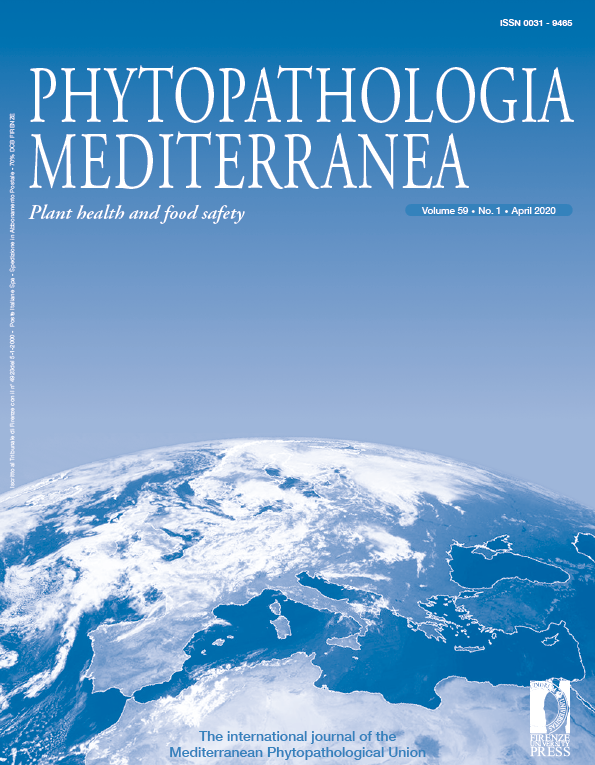Impacts of previous crops on inoculum of Fusarium culmorum in soil, and development of foot and root rot of durum wheat in Tunisia
Published 2020-04-02
Keywords
- Faba bean,
- fenugreek,
- legumes,
- rotation,
- vetch
How to Cite
Abstract
Fusarium foot and root rot (FFRR) of cereals, caused by Fusarium culmorum and other Fusarium spp., is one of the most important soil- and residue-borne diseases in Tunisia. Management of the disease relies primarily on cultural practices such as crop rotation. Impacts of previous crops on the population of F. culmorum in the soil, and the incidence and severity of FFRR in durum wheat, were evaluated under Tunisian farming systems. A field trial showed that break crops of faba bean and fenugreek reduced the amount of F. culmorum DNA in soil, by 58% (faba bean) and 65% (fenugreek), and decreased numbers of F. culmorum propagules per g of soil by 83% (faba bean) and 85% (fenugreek). Farm demonstration trials also showed that faba bean and vetch used as previous crops reduced F. culmorum inoculum in the soil. Non-cereal crops also reduced the incidence of F. culmorum present in durum wheat roots and stem bases. The greatest grain yields and thousand kernel weights were recorded when faba bean and vetch were used as previous crops, but were less where durum wheat was previously grown. There were strong correlations between inoculum level of F. culmorum in the soil and incidence of FFRR in the following year. Results obtained in the field trial were supported by those collected from three demonstration farm trials during two cropping seasons. This study demonstrated for the first time in Tunisia and the Mediterranean region that break crops are effective for reducing F. culmorum inoculum in the soil and decreasing the pathogen in wheat roots and stem bases. Inoculum levels in soil can predict the expression of the disease in the following year in Tunisian farming conditions. These results are likely to be useful for developing and implementing guidelines for the management of FFRR of durum wheat.






